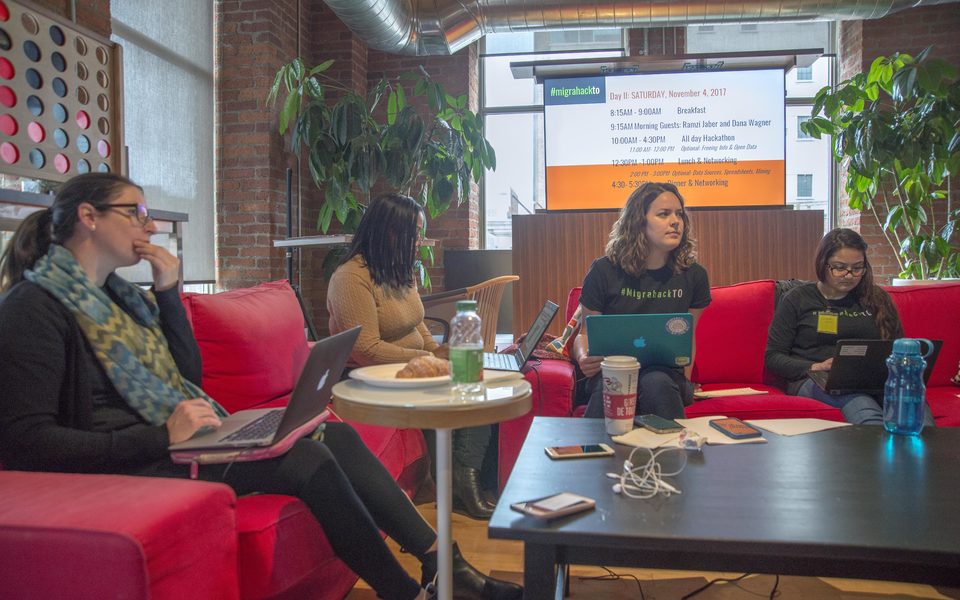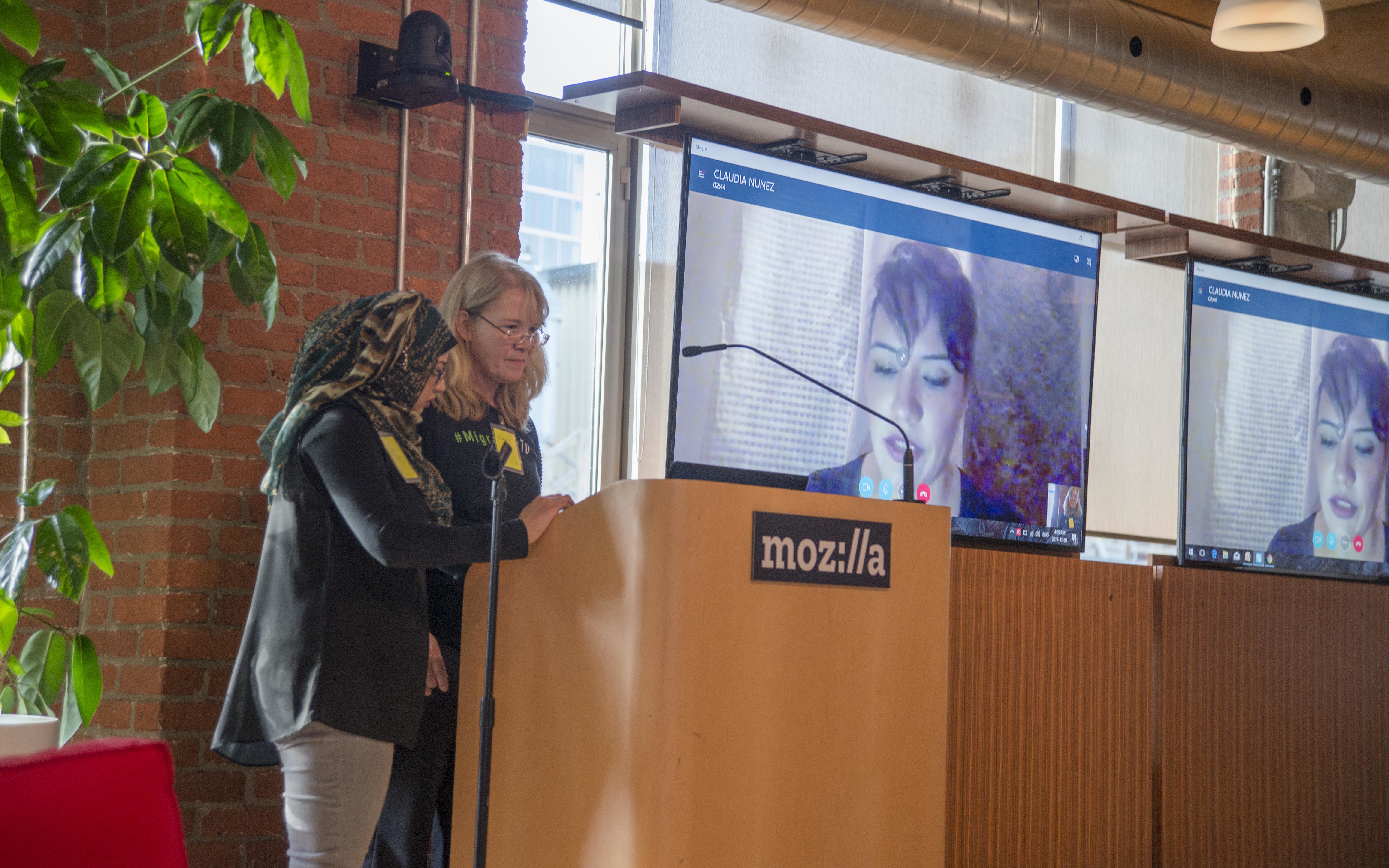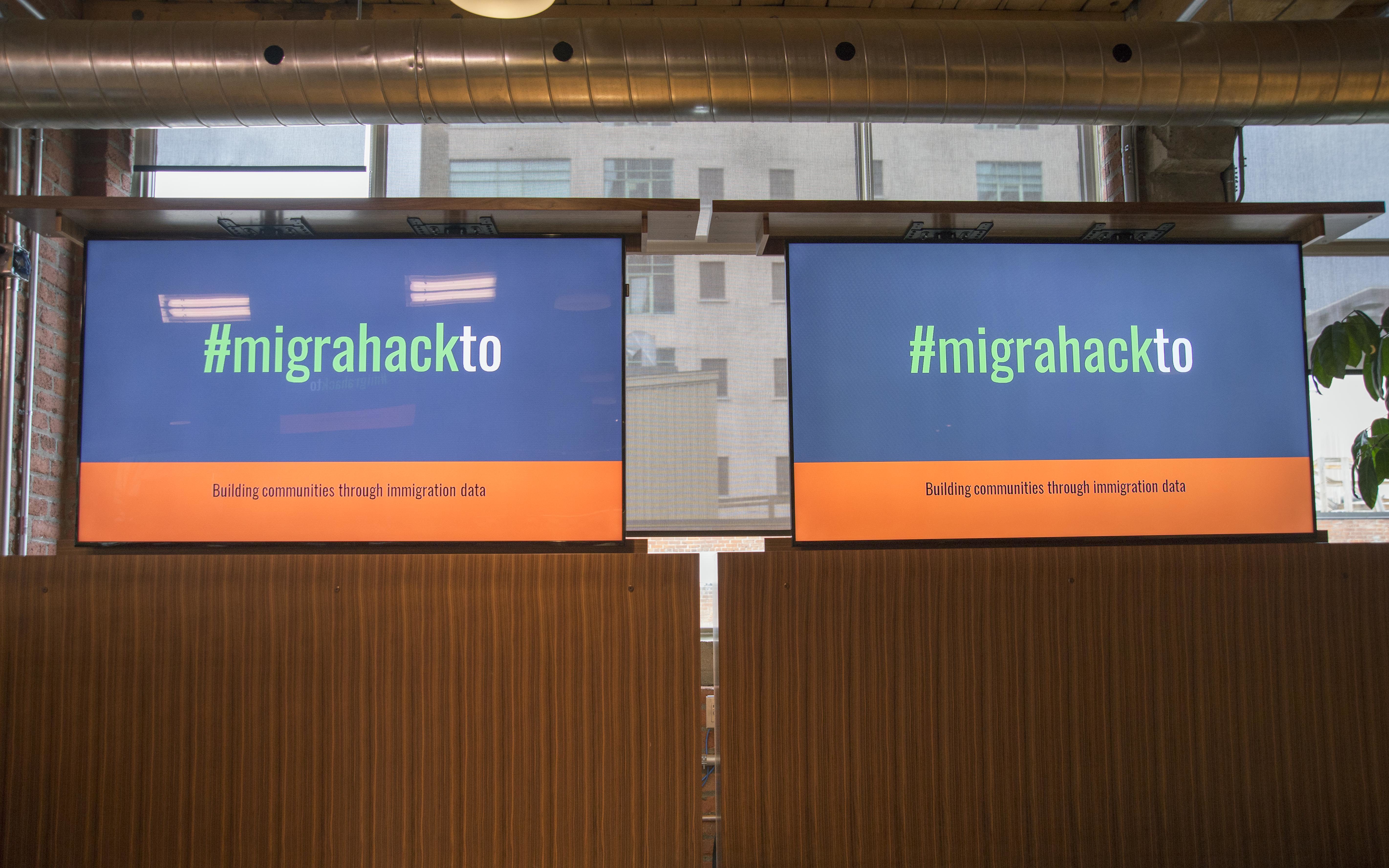
What happens when you combine a hackathon with immigration data and journalism? Migrahack.
Migrahack was founded in Los Angeles five years ago by journalist Claudia Nunez, though this year marked the first time it was held in Toronto. Run by the nonprofit MCIS Language Solutions, MigrahackTO took place from Nov. 3-5 and was hosted in the vibrant and laid-back community space at Mozilla’s Toronto office. The event split up journalists, nonprofit members, and developers into groups to collectively sort through open-source data and data provided by the nonprofits to create a project.
Nunez, who has covered immigration for almost 20 years and currently works at Hoy Los Angeles, created Migrahack after she participated in hackathons during her fellowship at Stanford. The idea behind MigrahackTO was a collaboration among three groups: nonprofits, which would bring forth a problem, developers to help program it, and journalists to contextualize and form the narrative—all supported by data.
“Migrahack is a project that helps give better coverage of immigration,” said Nunez, over Skype at MigrahackTO. “I noticed that there was a lack of accountability in the field of immigration. There were so many stories hiding in the numbers, and because of the lack of training and understanding of those numbers, I noticed that we limited our coverage.”
Though Nunez founded Migrahack, it was Eliana Trinaistic who brought it to Toronto. Trinaistic, who works as the social impact manager at MCIS Language Solutions, which offers interpretation and translation services, met Nunez in Toronto last year, where she first learned about Migrahack.

“I was just taken aback. I was thinking, this is brilliant,” said Trinaistic. “Because we have a social impact department [at MCIS], I have room to experiment a little and I have a budget. If I can convince them it’s a good project, then it’s up to me to put things together.”
So MigrahackTO was born.
“I am here to learn more about our data, and to be able to understand it better and translate it better for the public,” said Sally Abdullah, a participant and a project coordinator and caseworker at Lifeline Syria, a nonprofit that helps settle Syrian refugees in Canada. “We now have more time to work on our data, [and] to make it more accessible to reporters and journalists is really valuable.”
The teams take part in workshops on how to use data—including an introduction to interactive data visualization software Tableau, which can help make using statistics and numbers easier to digest and more effective in storytelling.
Beyond the workshops though lies the heart of the event that connects various professions together: how to effectively tell the stories behind the numbers. For reporter Nicholas Keung, who covers immigration at the Toronto Star, that means always having real people in his stories.
“You cannot hinge your story on just numbers and statistics,” said Keung. “You need to tell the human experience, so people can relate to the issue. People don’t really relate to numbers.”
According to Ramzi Jaber, cofounder and director of Visualizing Impact, a team that creates data visuals, data visualization can be used in storytelling that brings technical professionals, like coders, together with editorial ones, like illustrators and journalists.
“We have to learn how audiences think. Looking at the story, how do we craft it? We’re comparative creatures, we know something is big if we put something small next to it,” said Jaber, whose organization’s data visuals have been used in Al Jazeera English and the Huffington Post.

About the author
Visual editor at the Ryerson Review of Journalism.